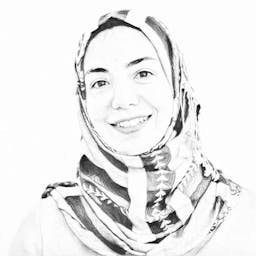When Muslim Women Speak Out
Jun 15, 2020
Story
Few weeks ago, on the weekend of 18-19 August, a pregnant Muslim woman was harassed and had her headscarf torn in a suburb in Stockholm. As a reaction to this crime, citizens from different faiths from all over the world have been posting photos of themselves wearing a scarf on social media outlets to show solidarity, using a common hashtag #HijabUppropet.
As reported, this initiative aims “to raise awareness on the types of abuse Muslim women face for their religious identity.” However, I believe that before raising awareness about that, people around the world should know who a Muslim woman is, and if there is a common identity that Muslim women over the globe can be classified.
A basic point here is that Muslim women are not a homogenous bloc. There are Muslim women of different countries, races, and cultures. Within Islam, these women identify with different interpretations and schools of thoughts. Most importantly, many Muslim women are unveiled, and many women wear the veil for non-religious considerations.
As a Muslim woman born and raised in the Middle East, I have been familiarized with texts on the negative framing of Arabs and Muslims by media. Edward Said’s ‘Orientalism’ and Jack Shaheen’s ‘Reel Bad Arabs’ are the best examples here. This negative framing of Islam has contributed to the unfavorable perception of Muslim women either as partners in terrorism, or as silent victims of terrorist Muslim males. Realistically, however, the threat of Muslim terrorism is exaggerated, and statistics show that only 6% of the terrorist attacks in the US between 1980-2005 were carried out by Muslim extremists.
It is very likely that the framing of Islam as a religion of terrorism by many media outlets contributes to the negative perception of Muslim women and to faith-hate crimes against them. Noticeably, it is often the stories of extremist groups or radically covered women that make it to the screens. But, aren’t there extremist groups in every religious or non-religious thought?
There are many groups that have been framed and stereotyped by the media, but it is the framing of Islam that has provoked global conflicts and hot discussions on Islam and globalization. Moreover, Islam is the world’s second largest religious tradition worldwide, where there is an estimated number or 1.6 billion Muslims according to the Pew Research Center. Instead of positively connecting the people of the world, traditional media has increased the gaps between us. The presence of social media today is a very powerful tool to reconnect us, despite our differences, and to promote mutual tolerance and respect. The hijab outcry is a good example of that, but there are also other ways to achieve this tolerability and to fill these gaps.
Because I interact with many veiled women I realized how different we, veiled women, are. Though we are members of the same society, the way we perceive ourselves, the veil, and religion greatly varies. In the texts on Islam that I was modestly exposed to, the voices of Muslim women were barely existent. The first time I heard the voices of Muslim women was when I selectively started the literature review for my dissertation on veiling. Despite my socio-religious background, I have felt the urge to hear more voices. That’s why I decided to conduct around 50 interviews to hear how veiled youth perceive themselves, and how non-veiled and non-Muslim youth perceive the veiled.
You, fellow reader, can also hear the voices of Muslim women over the virtual media. Talk to me or to one of the thousands Muslim women connected online. You can also register for free online courses on Islam, download books on Islam written, and read an alternative coverage of events to escape media framing. Only when we become media literate citizens the traditional outlets will be obliged to cover events more justly.
If you, fellow reader, are a Muslim woman, do not expect media or citizens to have a positive perception of you if you are not willing to speak out for yourself. Only by a grounded direct communication between us, the diverse people of the world, we can encourage tolerance and stimulate positive change in our increasingly polarized world.
This article is part of a writing assignment for Voices of Our Future a program of World Pulse that provides rigorous digital empowerment and citizen journalism training for grassroots women leaders. World Pulse lifts and unites the voices of women from some of the most unheard regions of the world.




